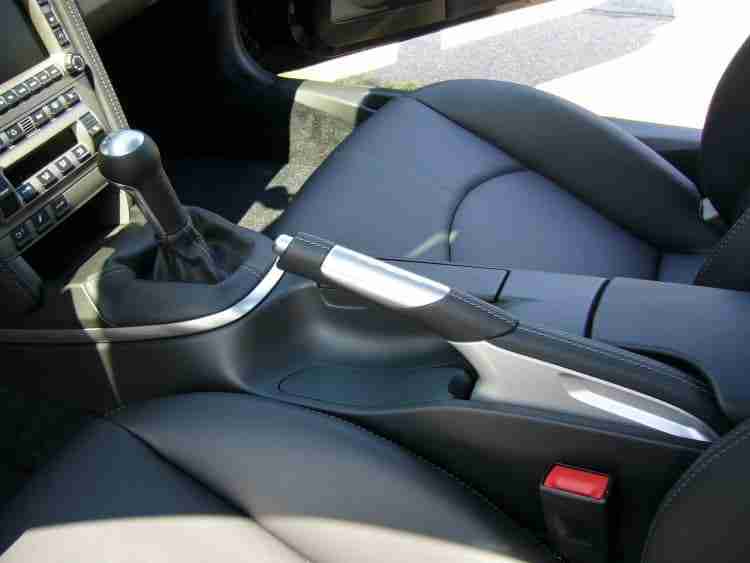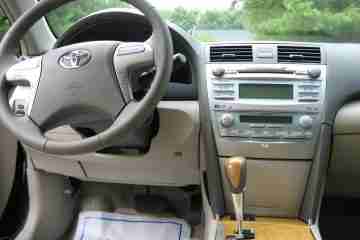What will happen if I pull the handbrake on whilst driving?

At some point in your life, you’ve probably seen a police chase scene in a movie. Dozens of police cars are chasing down a single car that is weaving in and out of traffic, going the wrong way down the highway. There are theatrical 360 degree turns and spectacular explosions. Although we know it’s unrealistic, it is nevertheless exciting to us sitting at home on the couch, bored on a Tuesday. What would it be like to be involved in a chase like that? What would the adrenaline rush be like? How would your regular, everyday Honda react to pulling the handbrake while driving at full speed?
If you can relate to the story above, read on. What really WILL happen to your car if you pull the handbrake on whilst driving? While it seems like the result will be a thrilling ride, in reality, it is more likely to cause an onslaught of damage to your vehicle.
What is a handbrake?
The handbrake, also called the parking brake or the emergency brake, was originally created in order to have an emergency stopping system for your car. Before the 1980’s, regulations on vehicles were not as strict as they are today. It was a much more frequent occurrence for the hydraulics system in the car to fail, causing the regular braking system to fail. The handbrake was added as a back-up system to stop your car in the event that the normal braking system was no longer working.
Since the 1980’s, regulations have become increasingly strict. The braking system in modern cars does not fail like it used to. Since then, the handbrake, while still included in our vehicles today, has a different function. Today, the handbrake serves the driver as more of a parking brake. It is engaged after the driver has placed the car in park to keep the car motionless in the event that the regular parking system fails.
Types of handbrakes
There are a few different types, or styles, of handbrake that modern cars have. They all serve the same purpose as stated above, even though they look quite different. There are also a few different locations that handbrakes can be in as well. Even though they are all different, they have one thing in common: all handbrakes, when engaged properly, will trigger a light on the dashboard to indicate that it is in use.
Pull Stick
The first, and most traditional, type of handbrake is the pull stick. A pull stick is typically located in the center console of the vehicle. It is exactly as it sounds: a stick that the driver pulls to engage the parking brake. The stick lays flat normally when the car is driving. When it is time to park, the stick is pulled straight upwards to put the parking brake into place. Typically, there is also a small button on the top of the stick that needs to be pushed in order to pull upwards. In order to disengage a pull stick parking brake, simply press the button and push the stick back down into its starting position.
Push/Pull Handle
The pull handle is another type of parking brake that is commonly used. Typically, the handle is located on the left side of the steering wheel, underneath the dashboard instrument panel. This small handle can be engaged by pushing it away from you. This will allow the parking brake to get into place. To disengage, the handle is pulled straight back towards the driver.
Foot Pedal
The foot pedal is a similar style of parking brake to the push/pull handle. It is typically a small pedal located all the way to the left of the gas and brake pedals. This pedal can be pushed with your left foot all the way down to the ground. This action will engage the pedal and it will stay where you push it. To remove this type of parking brake, use your foot to push down on the pedal again. This will allow it to return back to its starting position, removing the parking brake.
Push Button
The push button is the newest invention in parking brake technology. With the push button, there is no handle or stick or pedal involved. A small button located typically in the center console of the car serves as the parking brake. This button can be pushed to activate the parking brake, and pulled to deactivate. The entire system of the push button is electronic, so there is no force required to put the parking brake in place.
What happens when you engage the parking brake while driving full speed?
The answer to this question depends on the effectiveness of your car’s particular parking brake. For some cars, engaging the parking brake while driving will just gradually make the car slow down. In most modern cars, the handbrake is connected to the rear wheels of your car. If you are driving at full speed and pull the handbrake as hard as you can, this will cause the rear wheels to lock completely. When the wheels lock, they cease to spin and begin to skid on the surface of the street. This, in turn, will cause your car to begin to spin, which will most likely lead to a crash.
What damage will your car suffer from pulling the handbrake while driving?
When the parking brake is applied while the car is in motion, the brake pads touching the rotors causes friction. This friction wears away at your brake pads and rotors at a much faster rate than normal. If you do this frequently for fun, you will need to spend a lot of money on new brake pads. Another possibility is that a drum or disc in the car becomes warped from pulling the parking brake while the car is in motion. This also is a very serious issue and will cost hundreds of dollars to fix.
Pulling the handbrake on whilst driving also causes your tires to wear quickly and unevenly. Since this action will most likely cause your rear wheels to lock and slide, the tires on your rear wheels will be worn in completely different places than usual, and stripped of any tread or grip that they have. As with all of the issues mentioned, a new set of tires is extremely expensive.
Fast and the Furious?
In the end, the cons greatly outweigh the pros in this situation. There is far too much that could go wrong to risk pulling the handbrake while driving. If, after reading all of the above, you still have the desire to test out your 360 skills, consider the damage you will be causing to your vehicle. Do you have thousands of extra dollars to spend on your car? Chances are, you don’t, and you can’t afford for your car to be in the shop, or get seriously injured just to test out a crazy stunt. If you’re a true adrenaline junkie that can’t resist, head to an amusement park instead to get your fix. There are even test tracks that allow you to drive race cars for fun.












No Comment